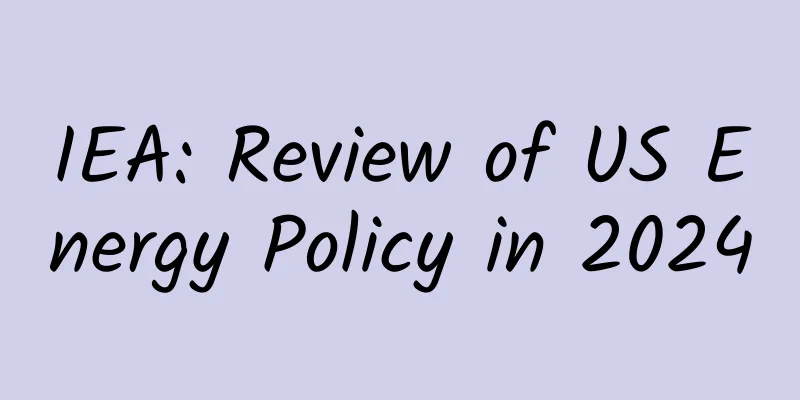IEA: Review of US Energy Policy in 2024

|
The IEA released the "2024 U.S. Energy Policy Review". The United States has implemented major energy and climate policy reforms aimed at putting the United States on a path to a clean, secure and affordable energy system and a net zero economy while promoting fair and high-quality employment. The United States is the world's second-largest energy consumer and CO2 emitter, but it is also a major technology and innovation leader, with rapid growth in clean energy investments making it the world's leading market for renewable energy, battery, electrolyzer and heat pump manufacturing, and electric vehicle sales. It is also the world's largest producer of biofuels. The United States is experiencing strong economic growth, accompanied by falling emissions and improving efficiency. Energy efficiency growth is expected to reach 4% by 2023. The IEA’s net-zero scenario and COP28’s commitment to increase global energy intensity progress from 2% to 4% have seen this effort every year for the past decade. The United States has driven major investments in renewable energy capacity, nuclear life extension, new nuclear, and low-carbon fuels. Domestic coal use has fallen to historic lows. Total U.S. CO2 emissions from energy combustion fell 4% in 2023, while the economy grew 2.5%. Two-thirds of the reduction came from the power sector. Strengthening energy security and clean manufacturing while reducing emissions Federal government actions are focused on expanding the clean energy economy and building diverse and resilient energy supply chains to strengthen energy security and clean manufacturing. Accelerate the industry’s transition to clean energy America’s energy transition depends on the development of new infrastructure across all sectors, and the federal government is pursuing a “private sector-led, government-supported approach” to achieve this goal. Implementing a people-centered energy transition Affordability, equity and quality jobs are at the heart of federal government policy. Managing energy security in transition Managing energy security during the transition requires governments to accelerate investment in clean energy supply and demand, making energy efficiency the first fuel.
|
<<: Does Huang Xiaoming’s Nut Projector P1 have the same looks as Angelababy?
>>: ZUK Z1 review: Has the goal of “Android version of iPhone” been achieved?
Recommend
Hot search! E. coli was detected in ice cream. Does it mean it is contaminated by feces? Can we still eat it safely?
Recently, a media report said that half of the ic...
Beichen Asia Market: Analysis of Beijing Automobile Market in May 2024
New car transactions In May, Beijing's new ca...
How does popping pimples make you feel sick and happy?
© Live Science Leviathan Press: I believe that mo...
The first "Metaverse" scam was exposed, claiming to have increased 18 times in 40 days, and many people have been fooled
The concept of "Metaverse" has inexplic...
You'd never guess that plants can...
If we fast-forward a video of a plant's growt...
How do WeChat fans, APP users, and transaction customers convert into each other?
Many vertical industry businesses are not as easy...
Dr. Mo's seven comments on 2015: This year's technology industry is a bit dull
2015 is coming to an end in 7 days. What were the...
iOS 12.1.1 is officially released: Do you want to try the new features?
Apple released the official version of iOS 12.1.1...
Home Guidelines for People Infected with COVID-19 (First Edition)
Source: National Health Commission official websi...
The valuation impulse behind Xiaomi, Meizu, and Hammer's concentration on the low-end
Yesterday, Smartisan released its 1,000-yuan smar...
YouTube's acquisition of Twitch is expected to open the door to the live streaming service market
According to foreign media reports, as of now, al...
The graceful water scenery in the desert, how beautiful are the lakes in Xinjiang?
Your browser does not support the video tag Lakes...
A summary of new ways and tactics to make articles popular on Xiaohongshu!
This year’s Double Eleven has ended, but Xiaohong...
The mystery of dark energy: Is the force behind the universe's expansion variable?
Author: Duan Yuechu and Huang Xianghong There are...









